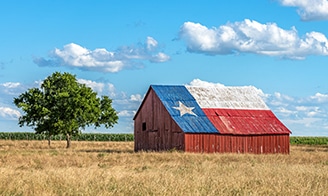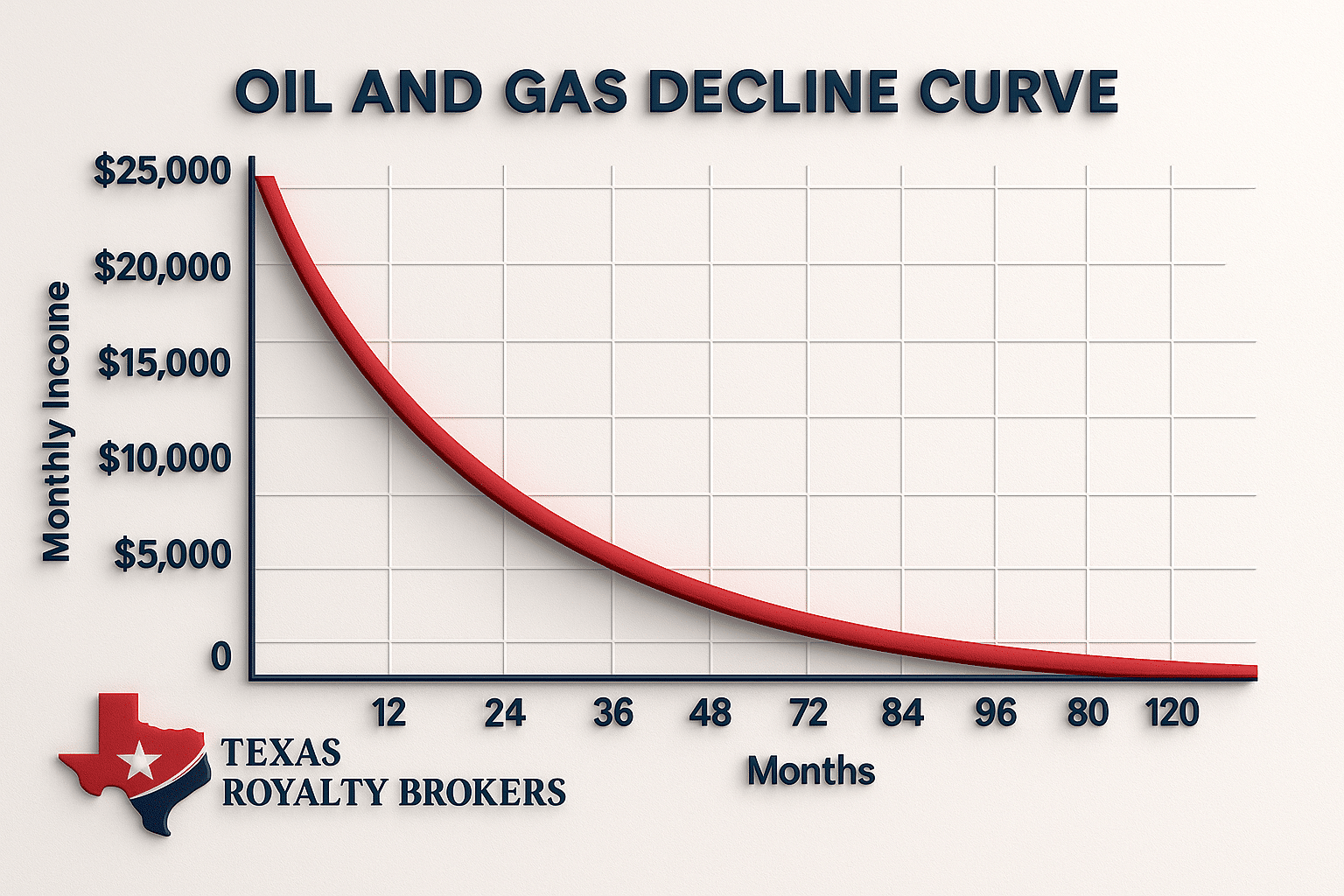Why Texas Royalty Brokers?
sellers
Buyers
State Specific Guides
Resources
Sell Oil and Gas Royalties for the Best Price
If you’ve received an offer to sell your oil and gas royalties, you might be wondering:
Is this offer fair?
Should I sell now?
What are my royalties actually worth?
You’re not alone and you’re asking the right questions.
Selling oil and gas royalties isn’t like selling a house or a car. It’s a high-stakes financial decision that can impact your wealth for decades.
Unfortunately, many mineral owners sell too quickly, take the first lowball offer they receive, or try to navigate the sale without professional help. Trying to sell oil and gas royalties on your own nearly always results in selling below market value.
This guide will break down everything you need to know about how to sell oil and gas royalties the smart way.
We’ll show you how royalty payments work, how to figure out what your royalties are worth, and why getting competitive bids is the key to selling for the highest possible price.
We’ll also explore the different types of royalties, income estimation tips, and how Texas Royalty Brokers can help you sell with confidence.
Here’s what we’ll cover:
What are Oil and Gas Royalties?
Calculating Oil and Gas Royalties Value
Selling Oil and Gas Royalties for the Best Price
Why Sell Oil and Gas Royalties?
How to Estimate Oil and Gas Royalty Income
Types of Oil and Gas Royalties
How to Buy Oil and Gas Royalties
Why Texas Royalty Brokers
Let’s dive in and make sure you walk away from the table with the best deal possible.
What are Oil and Gas Royalties?
Oil and gas royalties are payments made to mineral owners when oil or gas is produced from their mineral rights.
These payments come from oil and gas operators after the resources are extracted and sold.
The process starts when a mineral owner signs a lease with an operator. That lease allows the operator to explore, drill, and produce oil or gas from the land.
The amount a mineral owner receives is based on the royalty rate in their lease agreement.
Royalty rates usually range from 12.5% to 25%. This percentage determines how much of the production value the mineral owner will be paid.
For example, if $100,000 is made from production and the royalty rate is 20%, the mineral owner would be entitled to $20,000, minus any applicable production expenses.
Keep in mind, this is a very oversimplified example. This assumes you own 100% of the mineral rights and the operator owns the rest. In nearly all cases, your 20% share of the production is shared with many other mineral owners in the pooled unit.
Once production starts, the royalty payments are calculated using the agreed-upon rate and are typically paid monthly.
These royalties can provide an ongoing income stream for the mineral owner. However, the income may be inconsistent as production and the price of oil and gas are constantly changing.
The value of royalty interests can vary based on how much is produced, current oil and gas prices, and the terms in the lease.
Understanding how royalties work helps mineral owners make smarter decisions about their property and its value.
Calculating Oil and Gas Royalties Value
The value of oil and gas royalties is typically based on estimated future income from production.
Selling Oil and Gas Royalties for the Best Price
Why Sell Oil and Gas Royalties?
There are a number of reasons why mineral owners choose to sell oil and gas royalties.
Every situation is unique and there is no right or wrong answer. A lot of mineral owners have been told to never sell mineral rights. However, this is bad advice.
There are many reasons to consider selling oil and gas royalties. If you have been told to never sell oil and gas royalties, take some time to consider the following reasons to sell:
-
#1 Reason – Tax considerations: Selling can create cash flow and help manage capital gains taxes more efficiently. If you inherited mineral rights, you could save substantial money by selling. Read our tax article to learn more.
-
#2 Reason – Diversification of assets: Reinvesting the money can reduce risk, especially if royalties make up more than 5–10% of your net worth.
-
Immediate financial needs: A lump sum can help cover big expenses like debt, education, weddings, or buying a home.
-
Market timing: Selling when oil and gas prices are high can bring in a much better price.
-
Declining production: If a well is new or starting to decline, selling early can lock in more value.
-
Simplifying estate planning: Selling makes it easier to pass assets to heirs and avoid future conflicts.
-
Risk mitigation: Selling helps reduce exposure to price swings, regulation changes, and operator issues.
-
Investment opportunities: Funds from a sale can be used for more stable or higher-return investments.
-
Cash flow issues: Selling can replace small or unpredictable royalty checks with a dependable lump sum.
There’s no one right time to sell oil and gas royalties.
The important thing is to make the decision that fits your financial goals.
Just because someone said to never sell oil and gas royalties doesn’t mean that advice is right for you.
If the time feels right, Texas Royalty Brokers is here to help you sell with confidence and get the best price possible. Reach out to us for a free consultation. There is no pressure and no obligation.

How to Estimate Oil and Gas Royalty Income
Figuring out how to estimate oil and gas royalty income is extremely difficult. There are many variables that can cause your royalty income to dramatically change.
These factors include fluctuations in oil and gas prices, changes in production, and a well going offline just to name a few.
Estimating Oil and Gas Royalty Income for Existing Wells
Estimating oil and gas royalty income starts with understanding your current production. For existing wells, the best way to estimate income is to look at your royalty checks from the past few months.
Take the average monthly income from the last three royalty statements, then project that average over the expected life of the well. A well may last for 30 to 50 years.
However, the production may decline around 5% to 10% per year. You can expect your oil and gas royalty income to gradually decline 5% to 10% per year.
If the wells are less than 5 years old, this decline will be dramatic with income dropping over 50% in a single year.
This method gives a rough idea of future income, but only for wells that are already producing.
Estimating Oil and Gas Royalty Income for Future Drilling
Estimating royalty income for wells that haven’t been drilled yet is much harder.
Several unknowns make accurate predictions nearly impossible.
Oil and gas prices are always changing and future prices can’t be predicted with certainty.
Production levels will also depend on how effective the operator’s drilling and fracking techniques are. Even small differences in drilling methods can lead to big changes in how much oil or gas is produced.
Other factors like geology, new technology, or changes in regulations can also affect future income.
Because of all these variables, any estimate for a non-producing well is just a pure guess.
For existing wells, the history of production offers a solid base for income estimates.
But for future wells, there are too many moving parts to predict income with confidence.
If you’re thinking about selling mineral rights, keep in mind that every mineral rights buyer will estimate income differently.
That’s why offers can vary widely. Have you noticed a large range in value from the offers you see in the mail? This is why.
To get the best deal, you need competitive bids from multiple qualified buyers.
At Texas Royalty Brokers, we specialize in finding the buyer willing to pay the highest price based on their own expectations of royalty income.
As mentioned above, there is no way to know the value of future production. Each buyer will have their own opinion. Your goal is to find the mineral buyer who places the highest value on the expected future income.
Getting competitive bids at Texas Royalty Brokers is how you find the buyer willing to pay the best price.
Types of Oil and Royalties
How to Buy Oil and Gas Royalties
Buying oil and gas royalties can be a profitable investment but it’s risky.
One of the most important concepts to understand is the decline curve. Decline curves show how a well’s production drops over time. Most wells start strong, then decline quickly especially in the first 4 to 5 years.
By studying these curves, mineral rights investors can estimate future income and long-term oil and gas royalty value.
But decline curves are just one part of the picture.
There are several risks to keep in mind when buying oil and gas royalties.
Market prices for oil and gas can swing wildly, which affects income from royalties. Regulation changes, tax law updates, and political shifts can also impact profitability.
The performance of the operator running the well matters too. Better drilling and fracking techniques can boost production, while poor management can hurt returns. Geology and new technology also influence how much oil and gas gets pulled from the ground.
Because of all these factors, careful research and due diligence are essential before buying.
At Texas Royalty Brokers, a wide range of oil and gas royalty listings is available for mineral buyers.
Each listing includes supporting documents like check stubs and production data to help you evaluate the opportunity.
With our expertise and industry connections, buyers can make smart, informed investment decisions.
Our platform is built to encourage competitive bidding—so you’ll have access to fair pricing and a strong selection of deals.
Whether you’re new to royalties or a seasoned investor, Texas Royalty Brokers makes the process simple, transparent, and effective.

Why Texas Royalty Brokers
Selling oil and gas royalties can be complex and working with a professional broker makes all the difference.
At Texas Royalty Brokers, our job is to help you get the highest price possible, with the least amount of hassle.
We bring experience, market knowledge, and negotiation skills to the table. For mineral owners who aren’t familiar with the process, this expertise can be incredibly valuable.
Understanding what your royalties are worth is key to making a smart decision. The best way to determine the value of oil and gas royalties is to get competitive bids. This is the only way to determine a fair market price.
It’s important to have someone on your side who knows the market.
There are a lot of mineral buyers out there ready to take advantage of you. Working with Texas Royalty Brokers will ensure you have someone on your side looking out for your best interests.
Selling on your own can be overwhelming due to paperwork, buyer communication, and negotiations. By letting us handle the details, you can focus on more important things while we work to get you the best deal.
When you list mineral rights with Texas Royalty Brokers, your royalties are shown to a large network of qualified mineral buyers. This competitive bidding process ensures you get multiple offers and drives up the final sale price.
Our goal is to make the process simple, transparent, and profitable.
If you’re ready to sell your oil and gas royalties, Texas Royalty Brokers is here to help you do it the right way. Contact us using the contact form below.






